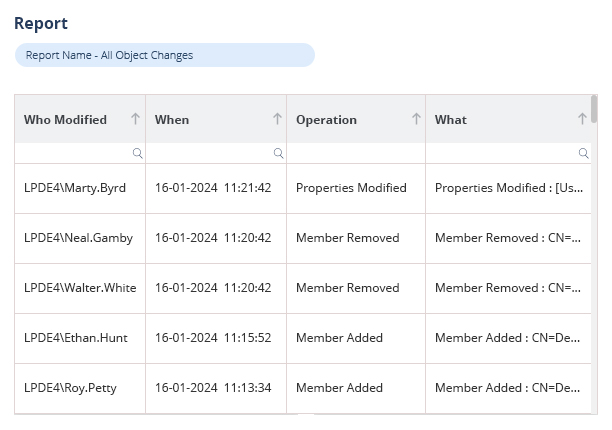
Most organizations have strict procedures and policies about the assets that employees are allowed to use. They specify which systems are available to everyone, which technologies are entirely prohibited, and who is privileged enough to gain access, such as administrator passwords. Although most employees follow these policies, some manage to bypass them. This is when the real crisis begins!
Shadow admins” are admins with unauthorized access to systems or networks. Shadow Admins are extremely dangerous to companies since they can execute prohibited administrative actions on Active Directory objects. AD administrators may assign users a right to create and delete accounts, reset passwords, and perform other actions.
The Hidden Origins: Understanding Shadow Admins
“Shadow Admin” as the term implies is an individual who has admin-level access in a system but is not recognized as administrators. They are essentially individuals who possess administrative rights but are not part of official admin groups such as “Domain Admins” or “Enterprise Admins.” Through specific access control entries (ACEs), nested group membership, or delegated permissions, their rights might get indirectly delegated. Shadow administrators are protected from regular security analyses since there is no explicit documentation and regular audits, rendering them an ideal target for privilege escalation and maintaining continuous access by attackers.
The company is certainly exposed to the shadow admin, but even worse is that they are hard to detect. Even though the users are operating in the background, they are not present on official admin lists.
Creation of Hidden Admins
Shadow admin accounts normally are a result of appropriate delegation practices that are poorly executed. In order to execute specific functions, IT personnel can give service accounts, help desk users, or specialist users more rights without completely realizing the breadth of rights. As indirect permissions accumulate over time, they establish hidden avenues to administrator access. Highly nested groups and old configurations also hide who really owns essential resources.
Shadow Admin Example (Simplified)
- James is a Domain Admin with full privileges in Active Directory.
- Lee is not a Domain Admin, but he can reset James’s password.
Lee becomes a Level 1 Shadow Admin —he can take over James’s account. - Lara can reset Lee’s password.
Lara becomes a Level 2 Shadow Admin — she can become Lee, then James. - Devin can reset Lara’s password.
Devin becomes a Level 3 Shadow Admin.
Each person has hidden control over a Domain Admin, without being in the admin group. These are Shadow Admins – invisible, dangerous, and often overlooked
How To Detect Hidden Privileges
Detecting shadow administrators involves more than just confirming group membership. Shadow admins might be difficult to locate since they are privileged users with administrative privileges within a system but are not officially affiliated with administration organizations. The native way to find the shadow admin accounts in AD is to perform a thorough audit of all ACL entries. The procedure appears to be inefficient because it is labor-intensive and manual, increasing the likelihood that these risky accounts may be missed. The sequential procedure is as follows:
- ACL Analysis: This method looks for possible shadow admins by analyzing the Access Control Lists (ACLs) of all accounts, including those outside the administrative group.
- Monitoring Logs: System logs to be examined for unusual activity patterns, such as a high volume of access attempts or rights given to unauthorized attempts.
- Implementation Tools: The mechanisms for identifying and monitoring shadow IT services and the related shadow admins should be put into place.
- PAM (Privileged Access Management) Solutions: These solutions restrict privileged accounts, such as shadow administrators, and enforce multi-factor authentication.
- Conduct Audit: It is necessary to conduct a routine audit, enforce least privilege, and maintain comprehensive records of all administrative accounts in order to prevent shadow admin exploitation and guarantee that only authorized, monitored accounts are granted additional access.
When Shadow Admins Become Security Issues
- Poor Permission Management: As teams grow, users can also shift roles, and their access can grow (instead of be adjusted). If there are no regular permission reviews of access for each user, it can go unnoticed that they were left with more rights than they need.
- Delegated Access Situations: Sometimes we assign permissions for user accounts or service accounts out of convenience, tracking the delegated access kind of goes away, so the shadow admins can get unknown admin-level rights in the end.
- Nested Groups and Complex Hierarchies: Nested groups (where users are members of nested groups) grant rights across systems with pretty much every platform. This poses a challenge to understand who has what level of access and can easily allow shadow admins to expand greatly without detection.
- Limited visibility: Permissions assigned outside of traditional admin groups and management are not visible by the standard reporting which can result in a user having serious access, and nobody even realizes it.
- Legacy capabilities: New, or more strictly procedural permissions will often include features of expectation from the old system still existing (e.g., rights that were hidden) resulting in security exposure.
If left unattended, and silent, these privileges make it easy for attackers to slowly gain rights on end-user systems across the network (with lateral movement) and all while doing anything significant in the environment.
How To Mitigate Shadow Admin Risks
Preventing shadow admin abuse starts with visibility and control. Organizations should:
- Conduct periodic audits of privileges to find all users with excessive privileges and document them.
- Implement the philosophy of least privilege with only granting the bare minimum amount of access.
- Use PAM (Privileged Access Management) tools to manage and monitor admin capabilities.
- Ensure all accounts with elevated permissions utilize multi-factor authentication (MFA).
- Implementing clear IT rules that specify which tools and services are approved can reduce rogue delegation.
- Convey information to employees and IT staff about the risks associated with shadow IT and unmanaged privilege.
How Lepide Helps
Lepide Auditor for Active Directory solution provides a straightforward way to analyse the effective permissions of your users and spot permission changes. Lepide provides detailed state-in-time for all Active Directory security audit reporting and tracks user behaviour including login/logoff behaviour and account lockouts, in order to maintain strong security postures in contemporary IT systems. Through enhanced visibility, stringent access rules, and ongoing privilege usage monitoring, businesses can expose these shadow accounts and bolster their security posture considerably. Because of their hidden nature, they are a prime target for attackers looking to take advantage of unseen pathways to power. The goal of managing shadow admins is to secure not only access but the entire digital world.
If you’re attempting to assess how you manage your shadow admins, have a look at this free guide, which is full of strategies for enhancing AD resilience and cleanliness.

